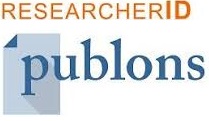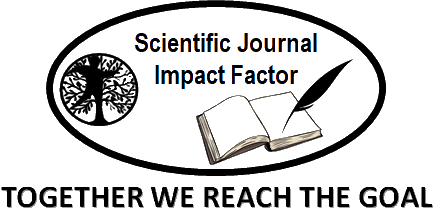Beyond Life and Death: Understanding Neural Correlates of Near-Death Experiences Through EEG and fMRI
Abstract
Keywords
Full Text:
PDFReferences
Cooper, R. A., & Ritchey, M. (2019). Cortico-hippocampal network connections support the multidimensional quality of episodic memory. eLife, 8.
Peinkhofer, C., Dreier, J. P., & Kondziella, D. (2019). Semiology and Mechanisms of Near-Death Experiences. Current Neurology and Neuroscience Reports, 19(9).
Bush, N. E., & Greyson, B. (2014, December 1). Distressing Near-Death Experiences: The Basics.
Sleutjes, A., Moreira-Almeida, A., & Greyson, B. (2014). Almost 40 years investigating Near-Death experiences. The Journal of Nervous and Mental Disease, 202(11), 833–836.
Romand, R., & Ehret, G. (2023). Neuro-functional modeling of near-death experiences in contexts of altered states of consciousness. Frontiers in Psychology, 13.
Nelson, K. (2015, April 1). Near-Death Experiences: Neuroscience Perspectives on Near-Death Experiences.
Greyson, B. (2015). Western scientific approaches to Near-Death experiences. Humanities, 4(4), 775–796.
Albantakis, L., Barbosa, L., Findlay, G., Grasso, M., Haun, A. M., Marshall, W., Mayner, W. G. P., Zaeemzadeh, A., Boly, M., Juel, B. E., Sasai, S., Fujii, K., David, I., Hendren, J., Lang, J. P., & Tononi, G. (2023). Integrated information theory (IIT) 4.0: Formulating the properties of phenomenal existence in physical terms. PLOS Computational Biology, 19(10), e1011465.
Block, N. (2005). Two neural correlates of consciousness. Trends in Cognitive Sciences, 9(2), 46–52.
Boly, M., Massimini, M., Tsuchiya, N., Postle, B. R., Koch, C., & Tononi, G. (2017). Are the Neural Correlates of Consciousness in the Front or in the Back of the Cerebral Cortex? Clinical and Neuroimaging Evidence. Journal of Neuroscience, 37(40), 9603–9613.
Boly, M., Massimini, M., Tsuchiya, N., Postle, B. R., Koch, C., Tononi, G., Odegaard, B., Knight, R. T., & Lau, H. (2017). Should a Few Null Findings Falsify Prefrontal Theories of Conscious Perception? Journal of Neuroscience, 37(40), 9593–9602.
Borjigin, J., Lee, U. C., Liu, T., Pal, D., Huff, S., Klarr, D., Sloboda, J., Hernandez, J., Wang, M. M., & Mashour, G. A. (2013). Surge of neurophysiological coherence and connectivity in the dying brain. Proceedings of the National Academy of Sciences of the United States of America, 110(35), 14432–14437.
Carton-Leclercq, A., Carrion-Falgarona, S., Baudin, P., Lemaire, P., Lecas, S., Topilko, T., Charpier, S., & Mahon, S. (2023). Laminar organization of neocortical activities during systemic anoxia. Neurobiology of Disease, 188, 106345.
Cassol, H., Martial, C., Annen, J., Martens, G., Charland-Verville, V., Majerus, S., & Laureys, S. (2019). A systematic analysis of distressing near-death experience accounts. Memory (Hove, England), 27(8), 1122–1129.
Cassol, H., Pétré, B., Degrange, S., Martial, C., Charland-Verville, V., Lallier, F., Bragard, I., Guillaume, M., & Laureys, S. (2018). Qualitative thematic analysis of the phenomenology of near-death experiences. PloS One, 13(2).
Chawla, L. S., Terek, M., Junker, C., Akst, S., Yoon, B., Brasha-Mitchell, E., & Seneff, M. G. (2017). Characterization of end-of-life electroencephalographic surges in critically ill patients. Death Studies, 41(6), 385–392.
Crick, F., & Koch, C. (2003). A framework for consciousness. Nature Neuroscience 2003 6:2, 6(2), 119–126.
Dehaene, S., & Changeux, J. P. (2011). Experimental and Theoretical Approaches to Conscious Processing. Neuron, 70(2), 200–227.
Dehaene, S., Kerszberg, M., & Changeux, J. P. (1998). A neuronal model of a global workspace in effortful cognitive tasks. Proceedings of the National Academy of Sciences of the United States of America, 95(24), 14529–14534.
Dzhala, V., Khalilov, I., Ben-Ari, Y., & Khazipov, R. (2001). Neuronal mechanisms of the anoxia-induced network oscillations in the rat hippocampus in vitro. Journal of Physiology, 536(2), 521–531.
Freund, T. F., Buzsáki, G., Prohaska, O. J., Leon, A., & Somogyi, P. (1989). Simultaneous recording of local electrical activity, partial oxygen tension and temperature in the rat hippocampus with a chamber-type microelectrode. Effects of anaesthesia, ischemia and epilepsy. Neuroscience, 28(3), 539–549.
Koch, C., Massimini, M., Boly, M., & Tononi, G. (2016). Neural correlates of consciousness: progress and problems. Nature Reviews Neuroscience 2016 17:5, 17(5), 307–321.
Li, D., Mabrouk, O. S., Liu, T., Tian, F., Xu, G., Rengifo, S., Choi, S. J., Mathur, A., Crooks, C. P., Kennedy, R. T., Wang, M. M., Ghanbari, H., & Borjigin, J. (2015). Asphyxia-activated corticocardiac signaling accelerates onset of cardiac arrest. Proceedings of the National Academy of Sciences of the United States of America, 112(16), E2073–E2082.
Martial, C., Cassol, H., Laureys, S., & Gosseries, O. (2020). Near-Death Experience as a Probe to Explore (Disconnected) Consciousness. Trends in Cognitive Sciences, 24(3), 173–183.
Martial, C., Charland-Verville, V., Cassol, H., Didone, V., Van Der Linden, M., & Laureys, S. (2017). Intensity and memory characteristics of near-death experiences. Consciousness and Cognition, 56, 120–127.
Mashour, G. A., Lee, U. C., Pal, D., & Li, D. (2024). Consciousness and the Dying Brain. Anesthesiology, 140(6), 1221.
Mashour, G. A., Roelfsema, P., Changeux, J. P., & Dehaene, S. (2020). Conscious Processing and the Global Neuronal Workspace Hypothesis. Neuron, 105(5), 776–798.
Medicine, P. V. L.-M., & 2014, undefined. (n.d.). Consciousness beyond life: the science of the near-death experience. Pmc.Ncbi.Nlm.Nih.Gov. Retrieved February 23, 2025.
Miller, J. (1988). The light beyond, by Raymond A. Moody, Jr. with Paul Perry. Journal of Near-Death Studies, 7(3), 191–199.
Oizumi, M., Albantakis, L., & Tononi, G. (2014). From the Phenomenology to the Mechanisms of Consciousness: Integrated Information Theory 3.0. PLOS Computational Biology, 10(5), e1003588.
Palmieri, A., Calvo, V., Kleinbub, J. R., Meconi, F., Marangoni, M., Barilaro, P., Broggio, A., Sambin, M., & Sessa, P. (2014). “Reality” of near-death-experience memories: evidence from a psychodynamic and electrophysiological integrated study. Frontiers in Human Neuroscience, 8(JUNE).
Revah, O., Lasser-Katz, E., Fleidervish, I. A., & Gutnick, M. J. (2016). The earliest neuronal responses to hypoxia in the neocortical circuit are glutamate-dependent. Neurobiology of Disease, 95, 158–167.
Schramm, A. E., Carton-Leclercq, A., Diallo, S., Navarro, V., Chavez, M., Mahon, S., & Charpier, S. (2020). Identifying neuronal correlates of dying and resuscitation in a model of reversible brain anoxia. Progress in Neurobiology, 185, 101733.
Siclari, F., Baird, B., Perogamvros, L., Bernardi, G., LaRocque, J. J., Riedner, B., Boly, M., Postle, B. R., & Tononi, G. (2017). The neural correlates of dreaming. Nature Neuroscience 2017 20:6, 20(6), 872–878.
Tononi, G. (2004). An information integration theory of consciousness. BMC Neuroscience, 5(1), 1–22.
van Lommel, P. (2011). Near-death experiences: the experience of the self as real and not as an illusion. Annals of the New York Academy of Sciences, 1234(1), 19–28.
Van Lommel, P., Van Wees, R., Meyers, V., & Elfferich, I. (2001). Near-death experience in survivors of cardiac arrest: A prospective study in the Netherlands. Lancet, 358(9298), 2039–2045.
Xu, G., Mihaylova, T., Li, D., Tian, F., Farrehi, P. M., Parent, J. M., Mashour, G. A., Wang, M. M., & Borjigin, J. (2023). Surge of neurophysiological coupling and connectivity of gamma oscillations in the dying human brain. Proceedings of the National Academy of Sciences of the United States of America, 120(19), e2216268120.
Tanny, P. (2024, September 24). The science behind Near-Death experiences: What happens in the brain? NDE Library.
Cerebral hypoxia. (2024, July 2). Cleveland Clinic.
Shaw, N. A. (2024). The gamma-band activity model of the near-death experience: a critique and a reinterpretation. F1000Research, 13, 674.
Timmermann, C., Roseman, L., Schartner, M., Milliere, R., Williams, L. T. J., Erritzoe, D., Muthukumaraswamy, S., Ashton, M., Bendrioua, A., Kaur, O., Turton, S., Nour, M. M., Day, C. M., Leech, R., Nutt, D. J., & Carhart-Harris, R. L. (2019). Neural correlates of the DMT experience assessed with multivariate EEG. Scientific Reports, 9(1).
Martial, C., Mensen, A., Charland-Verville, V., Vanhaudenhuyse, A., Rentmeister, D., Bahri, M. A., Cassol, H., Englebert, J., Gosseries, O., Laureys, S., & Faymonville, M. (2019). Neurophenomenology of near-death experience memory in hypnotic recall: a within-subject EEG study. Scientific Reports, 9(1).
Timmermann, C., Roseman, L., Williams, L., Erritzoe, D., Martial, C., Cassol, H., Laureys, S., Nutt, D., & Carhart-Harris, R. (2018). DMT models the Near-Death experience. Frontiers in Psychology, 9.
Mashour, G. A., Lee, U., Pal, D., & Li, D. (2024). Consciousness and the dying brain. Anesthesiology, 140(6), 1221–1231.
Koch, C. (2023). Do not go gently into that good night: The dying brain and its paradoxically heightened electrical activity. Proceedings of the National Academy of Sciences, 120(22).
Near-Death experiences. (2021, January 18). Psychology Today.
Moody, R. A. (2013, October 1). Getting Comfortable with Death & Near-Death Experiences: Near-Death Experiences: An essay in Medicine & Philosophy.
Greyson, B. (2011). Cosmological implications of near-death experiences. Division of Perceptual Studies, University of Virginia
Agrillo, C. (2011). Near-Death experience: Out-of-Body and Out-of-Brain? Review of General Psychology, 15(1), 1–10.
Thomas, D., & O’Connor, G. (2023). Exploring near death experiences with children post intensive care: A case series. EXPLORE, 20(3), 443–449.
Kopel, J., & Webb, M. (2022). Near-Death Experiences and Religious Experience: An Exploration of Spirituality in medicine. Religions, 13(2), 156.
Craffert, P. (2015, July 30). Do out-of-body and near-death experiences point towards the reality of nonlocal consciousness? A critical evaluation. Craffert | the Journal for Transdisciplinary Research in Southern Africa.
DOI: http://dx.doi.org/10.52155/ijpsat.v49.2.7093
Refbacks
- There are currently no refbacks.
Copyright (c) 2025 Apurva Sudesh Abitkar, Zainab Hashmi, Clissia Dsouza, Balamurali Krishna Muralee Dharan Veena, Maria Shibu, Ved Atul Ahire

This work is licensed under a Creative Commons Attribution 4.0 International License.




















